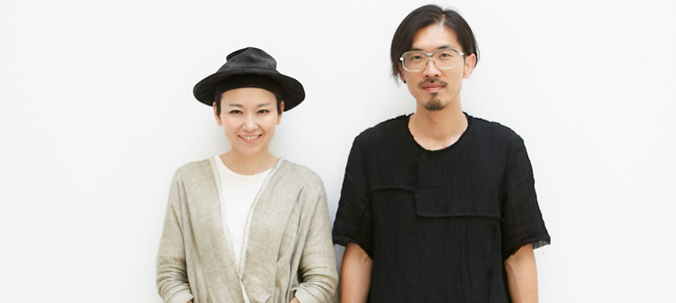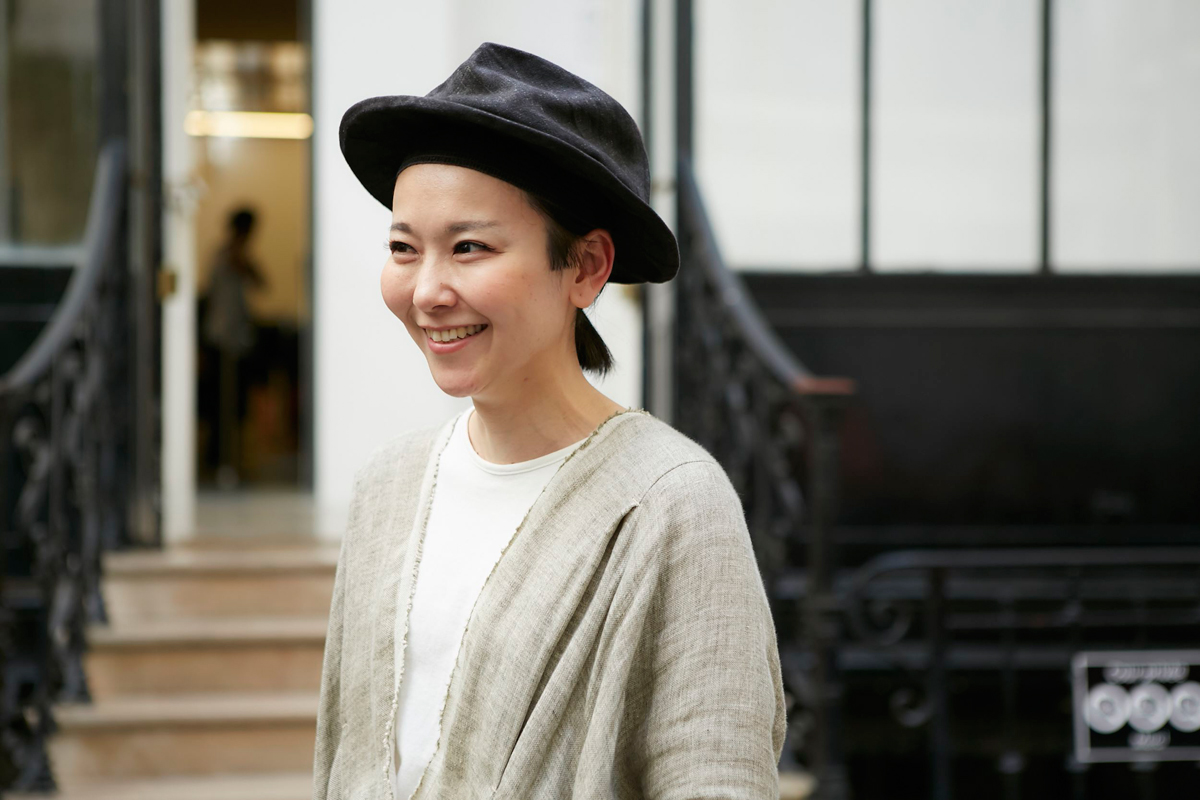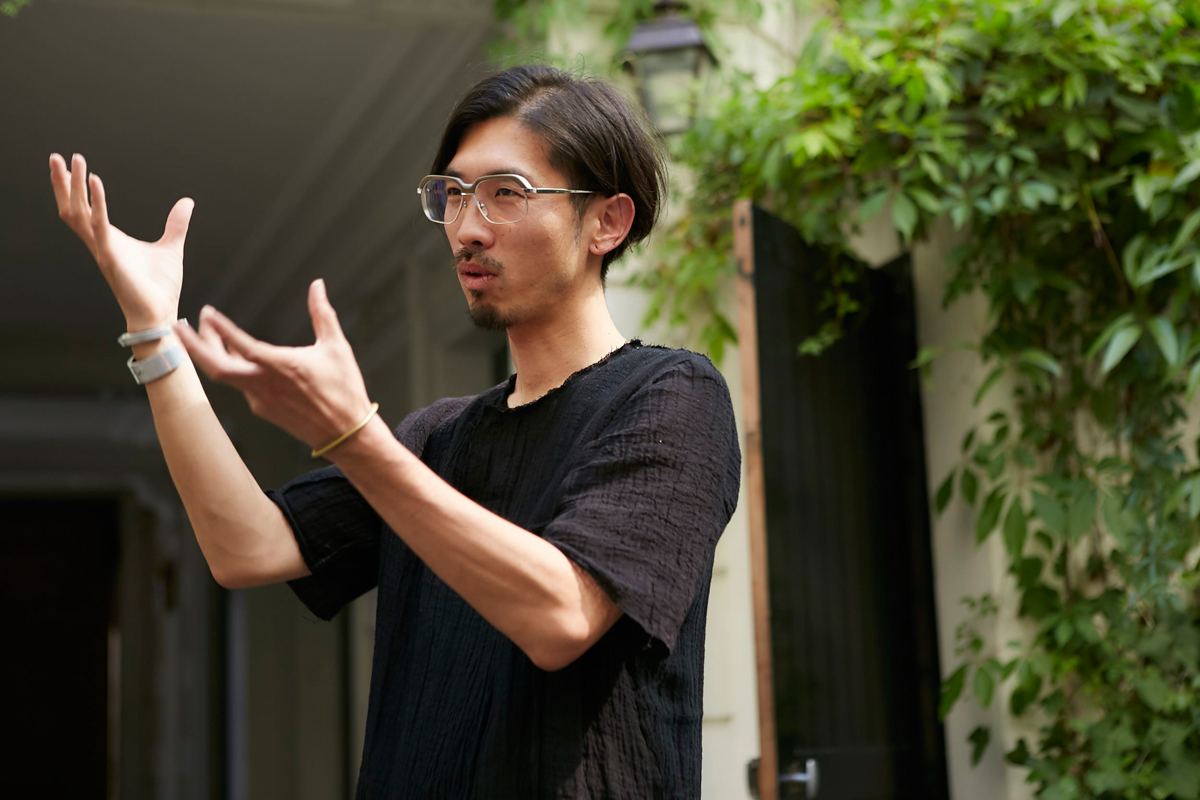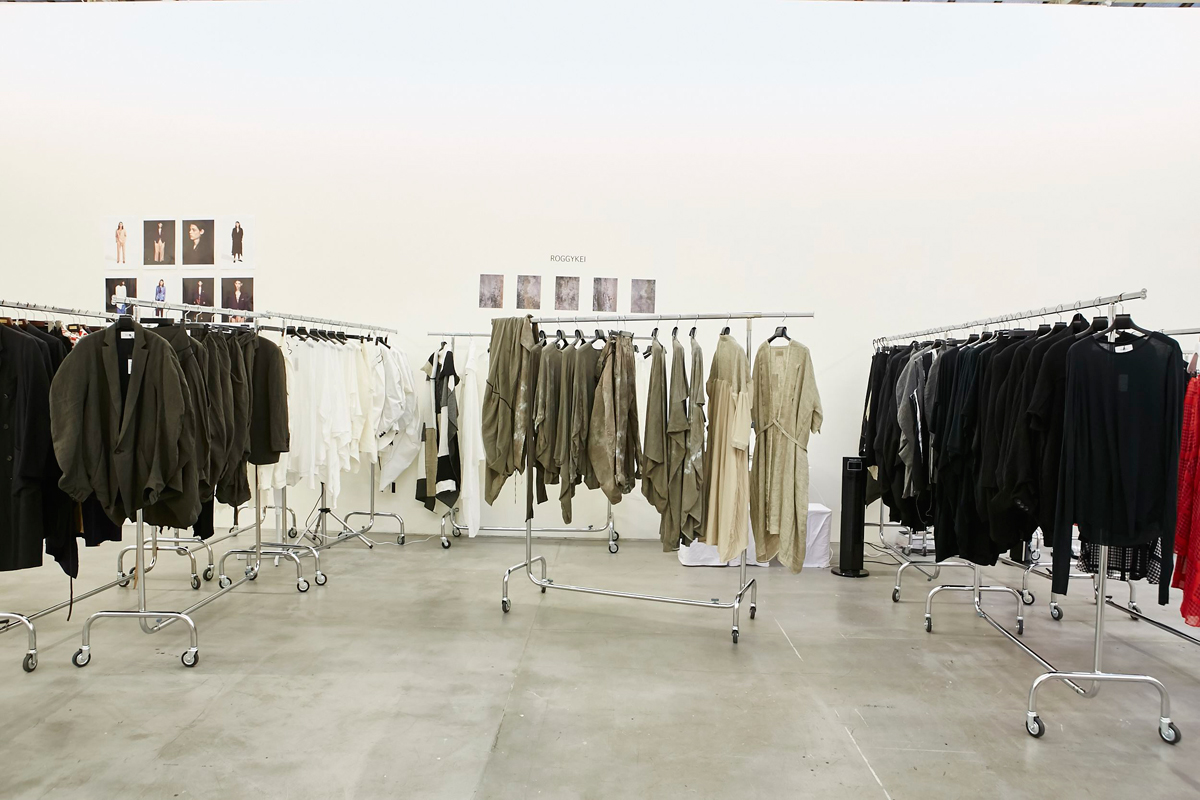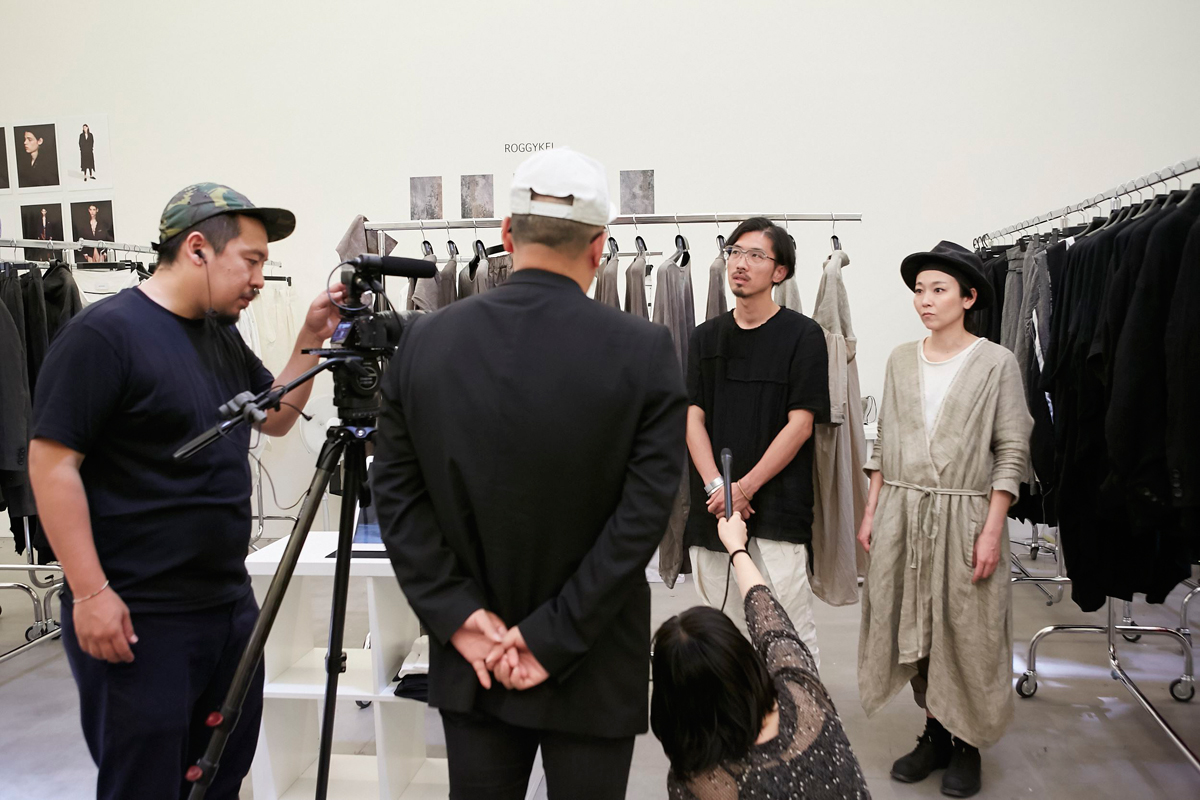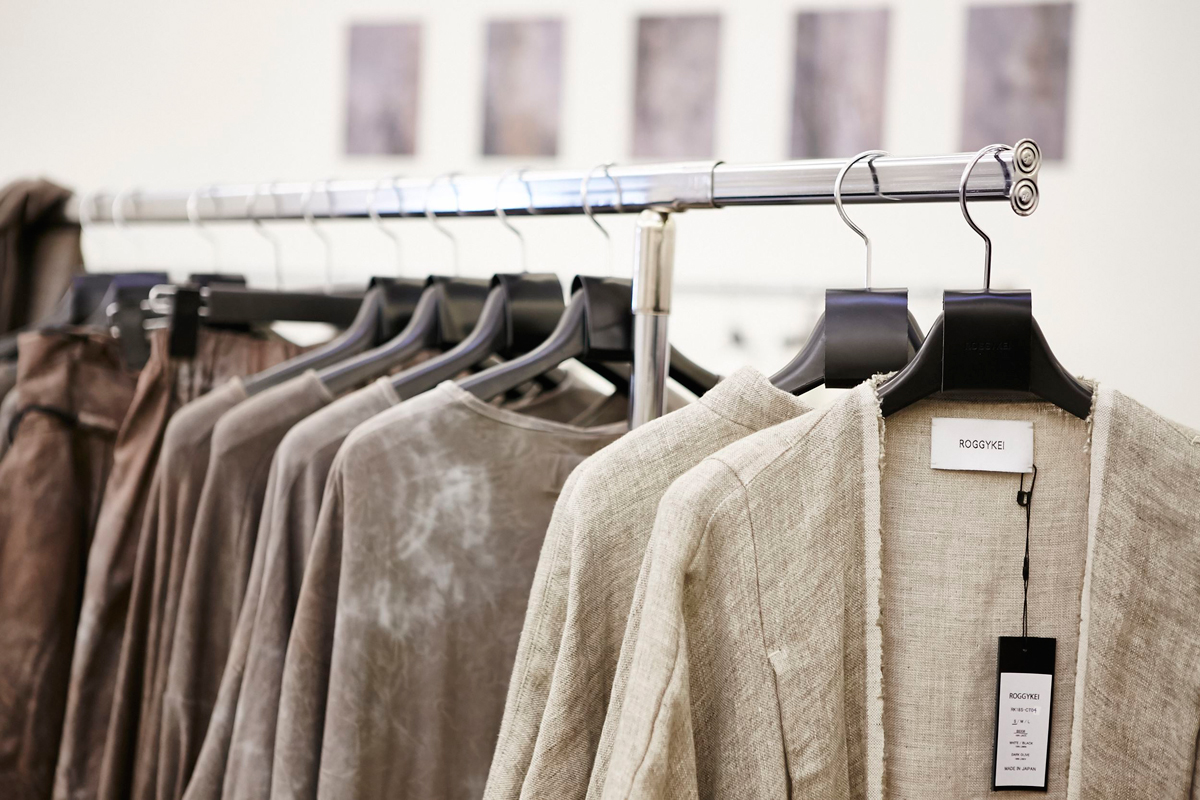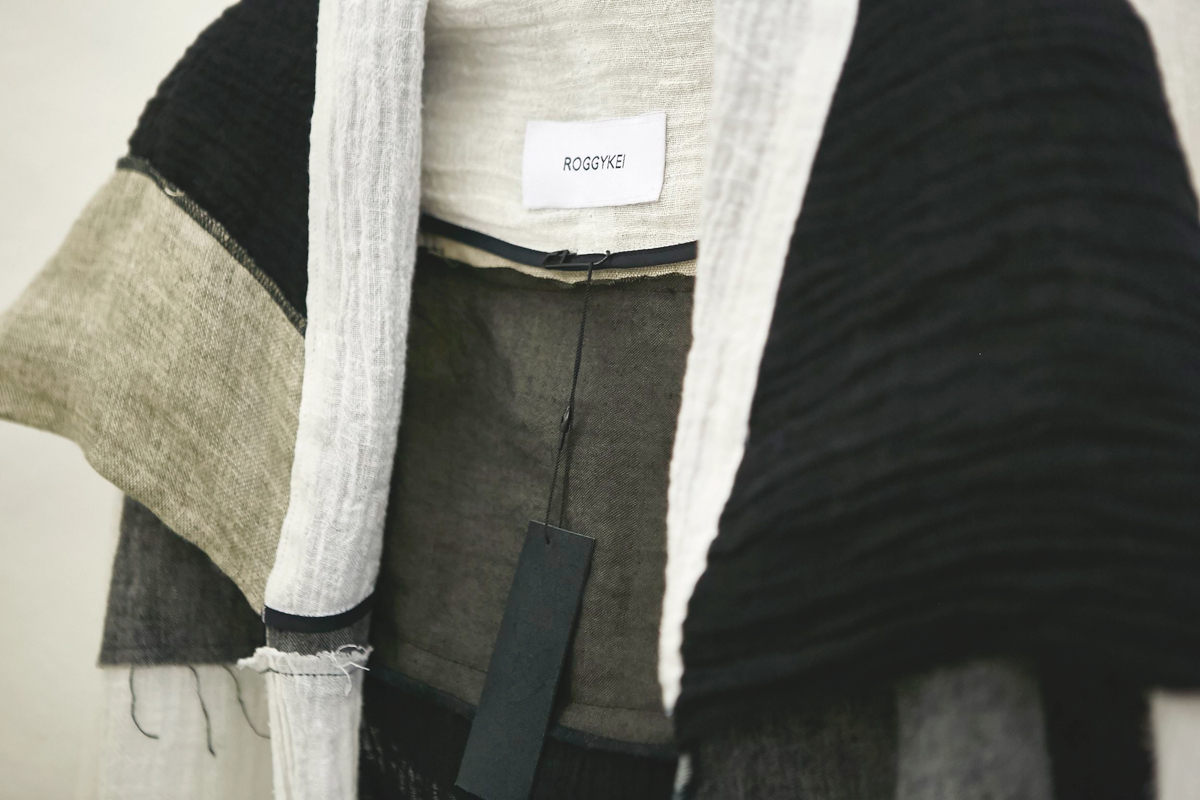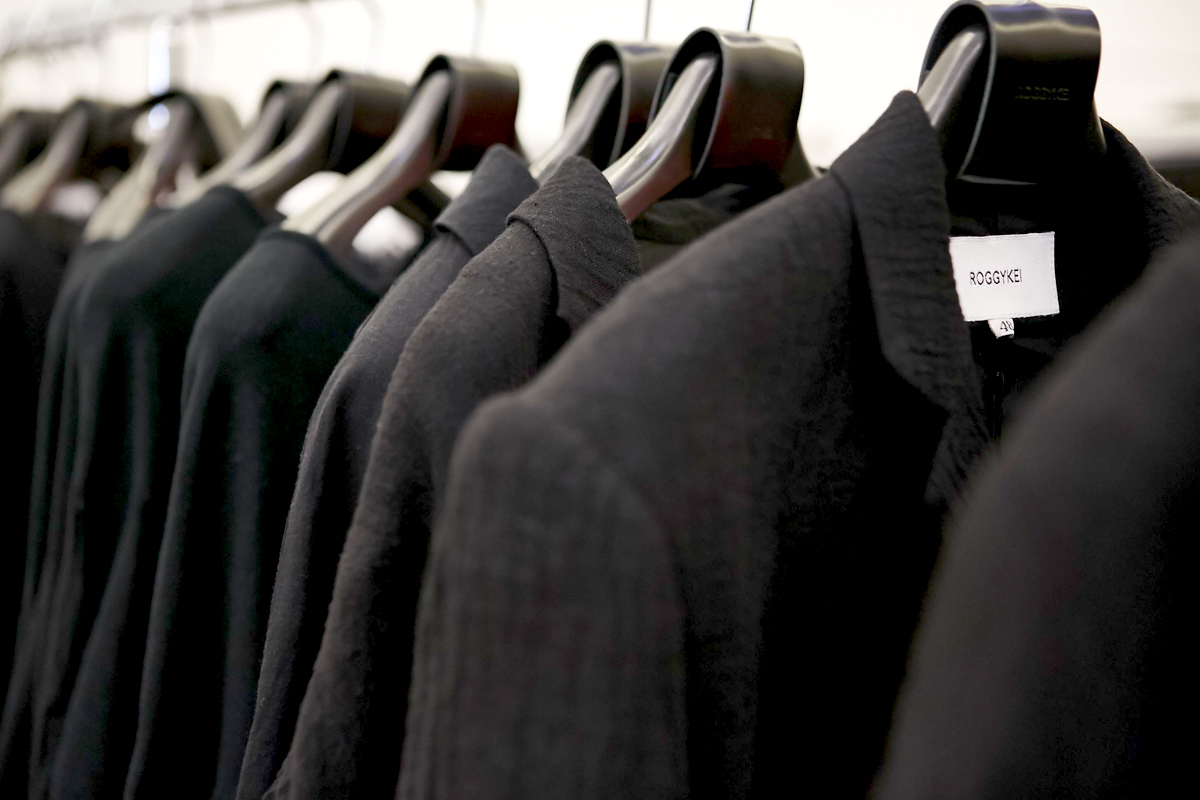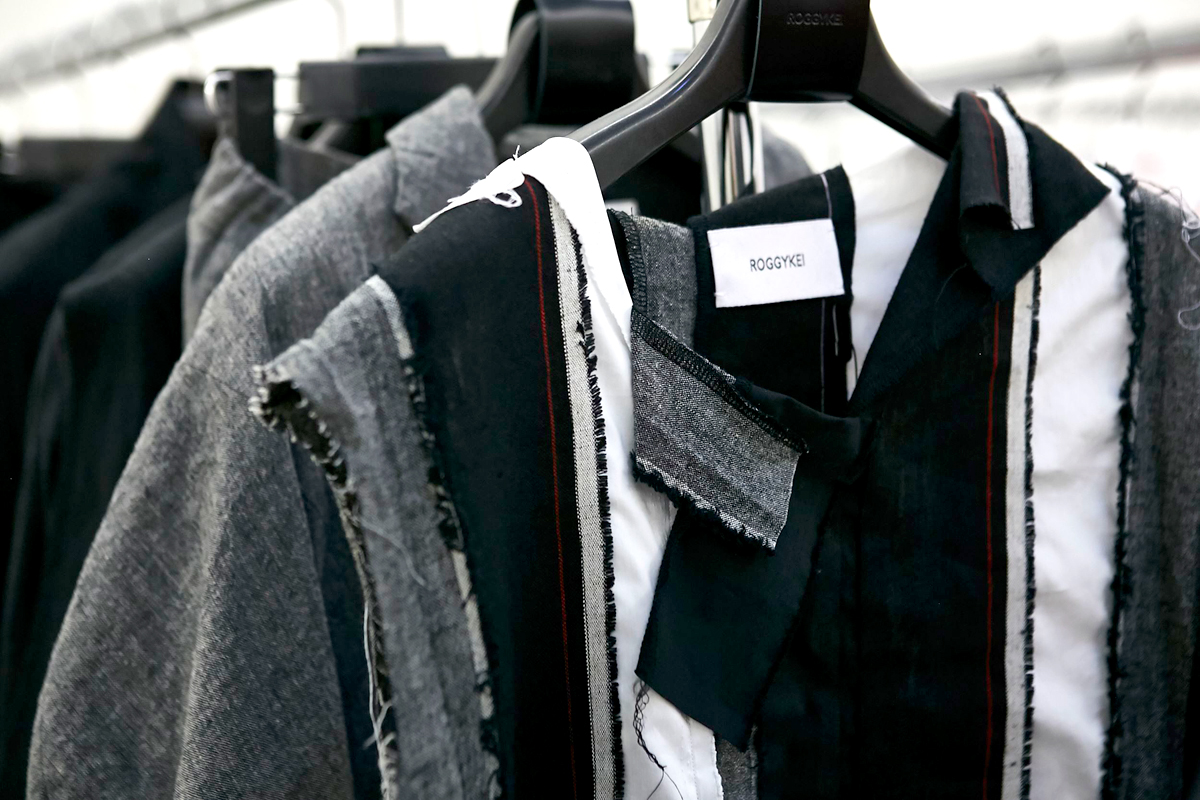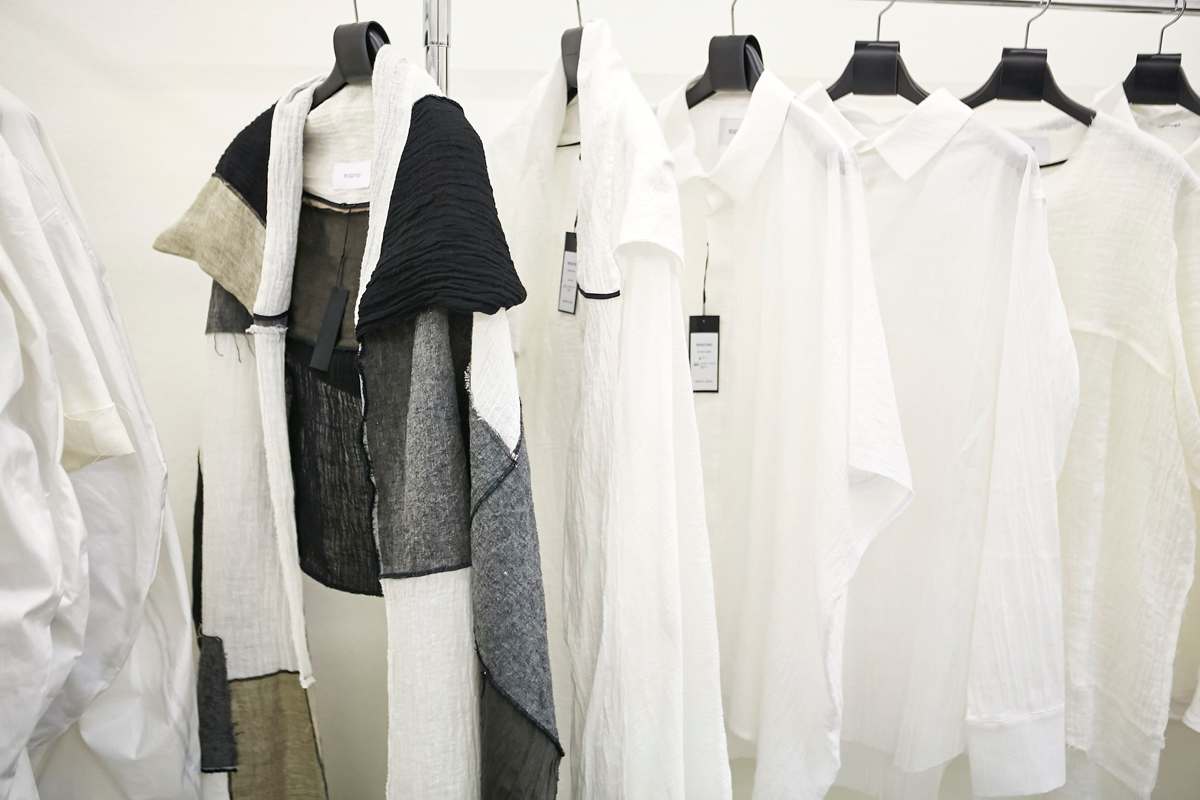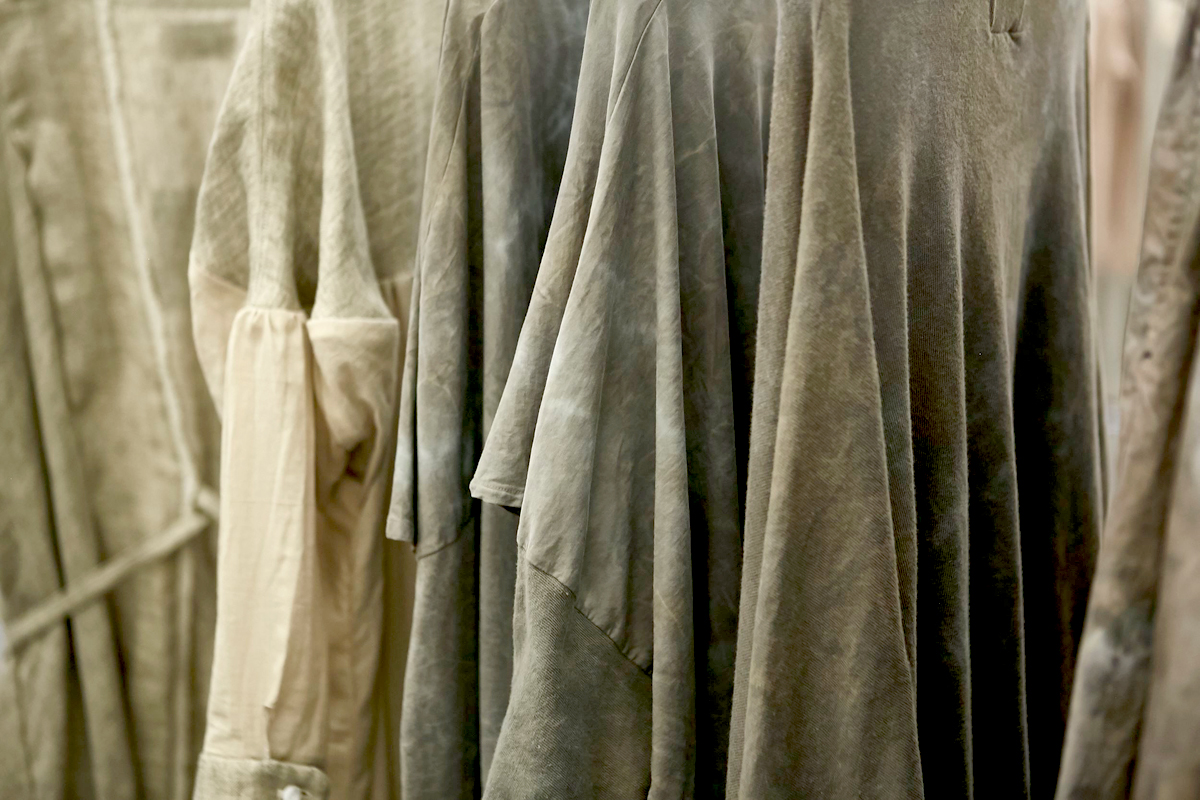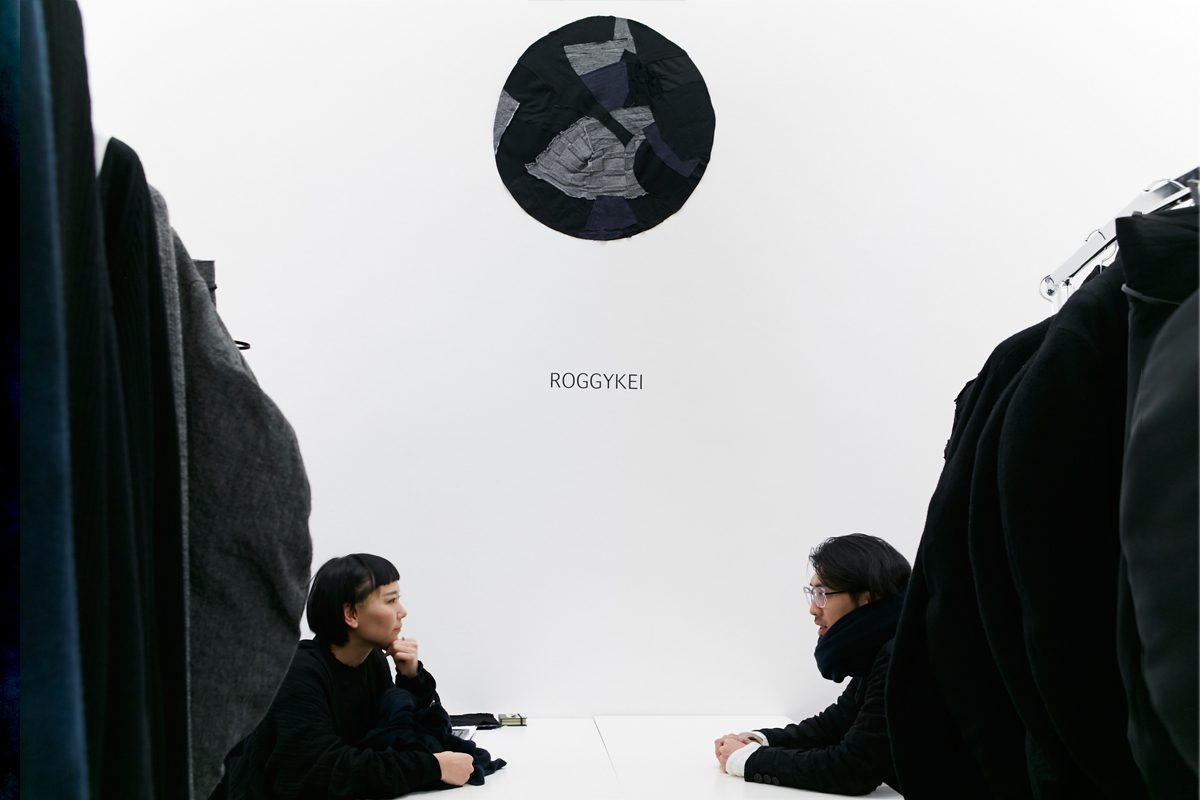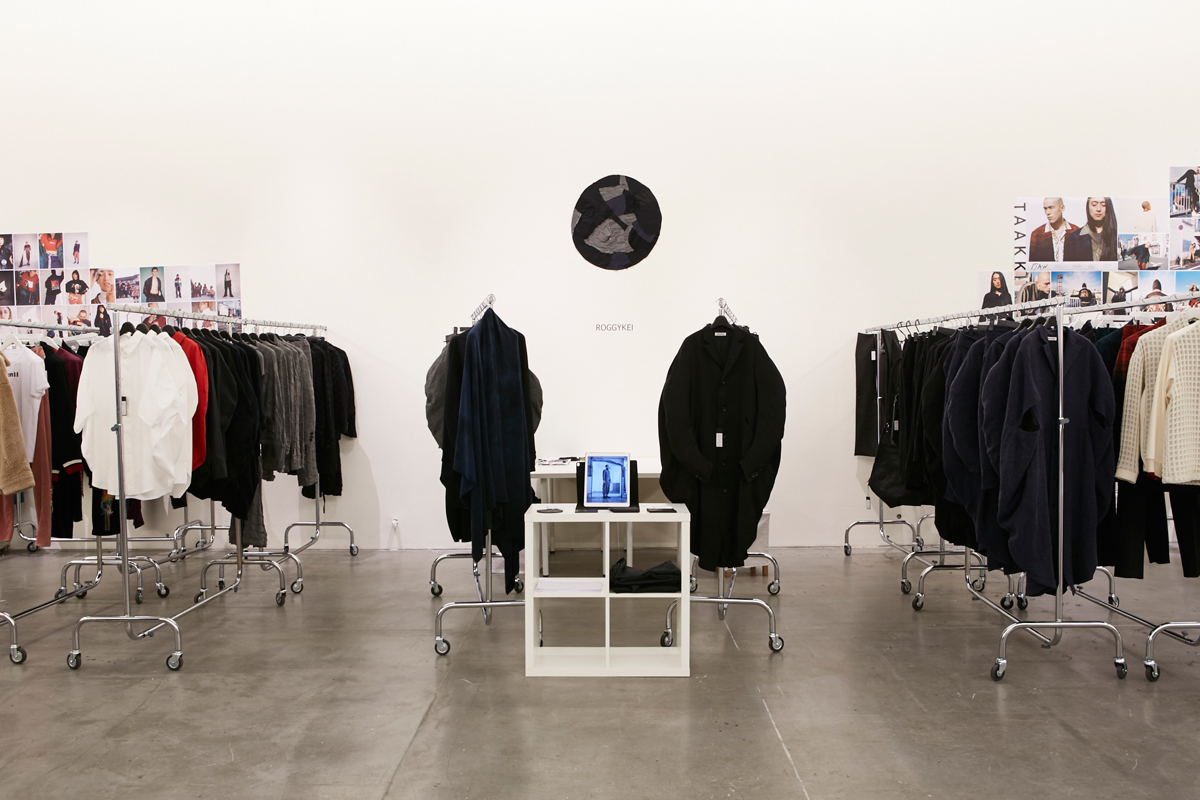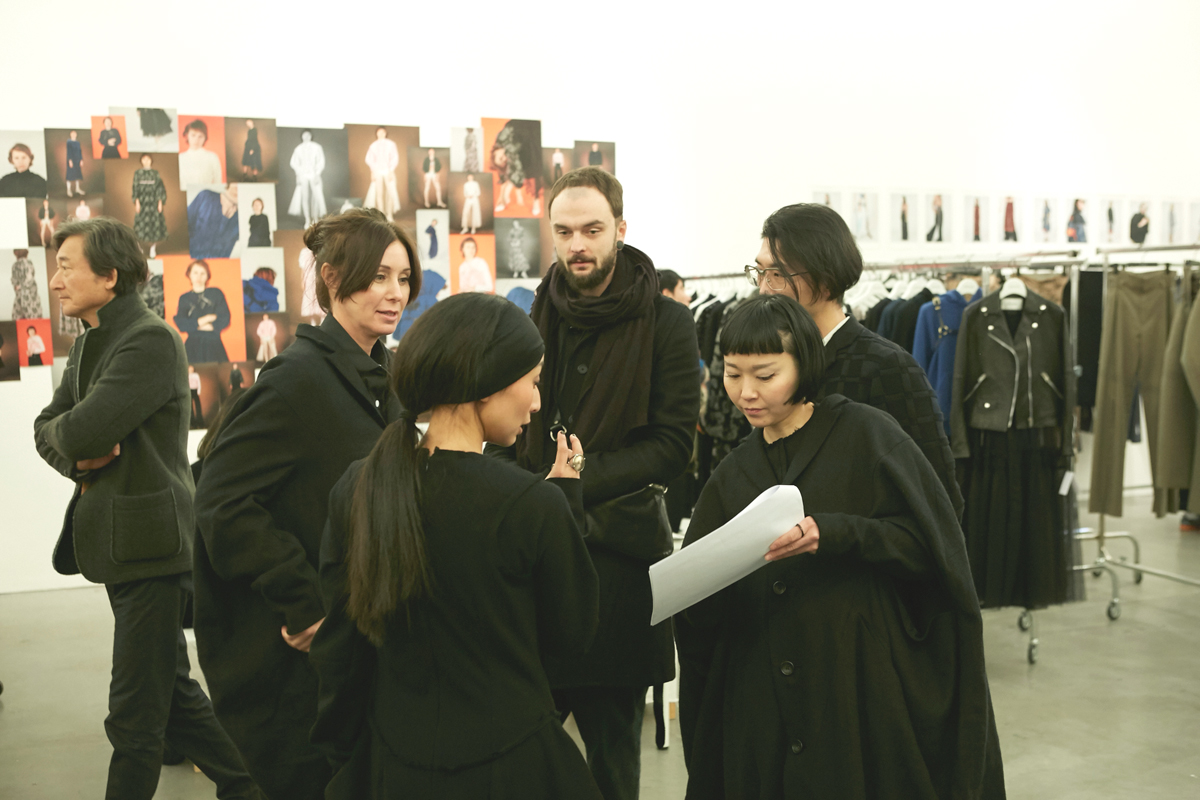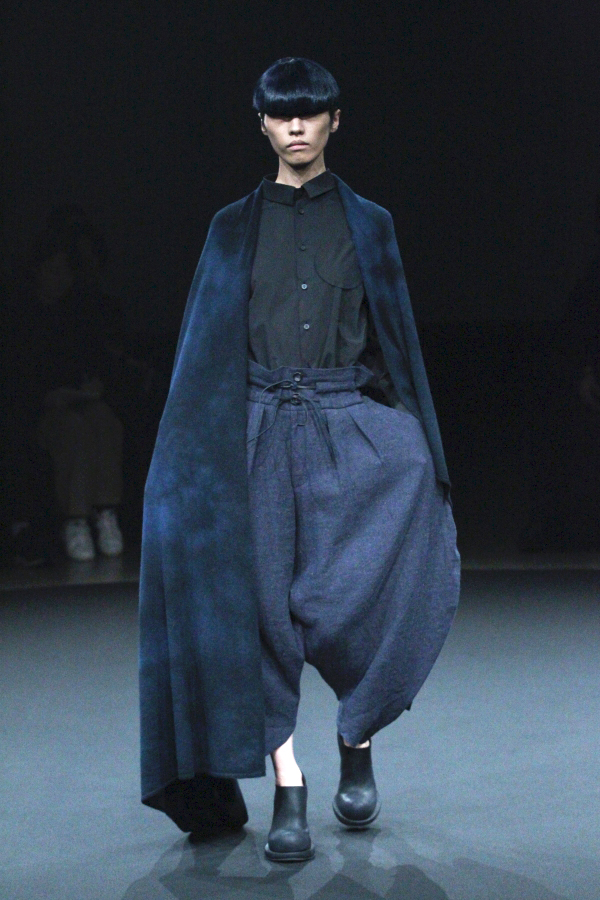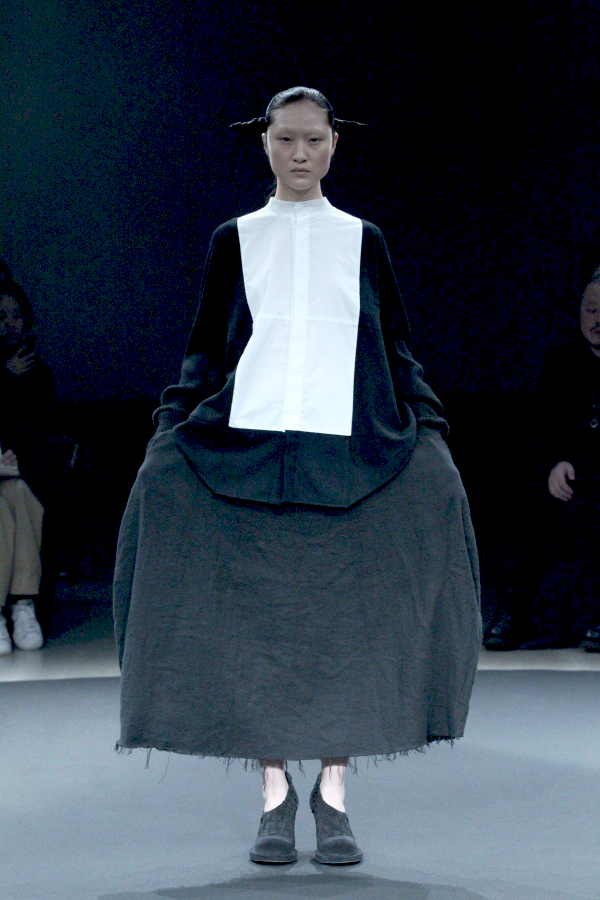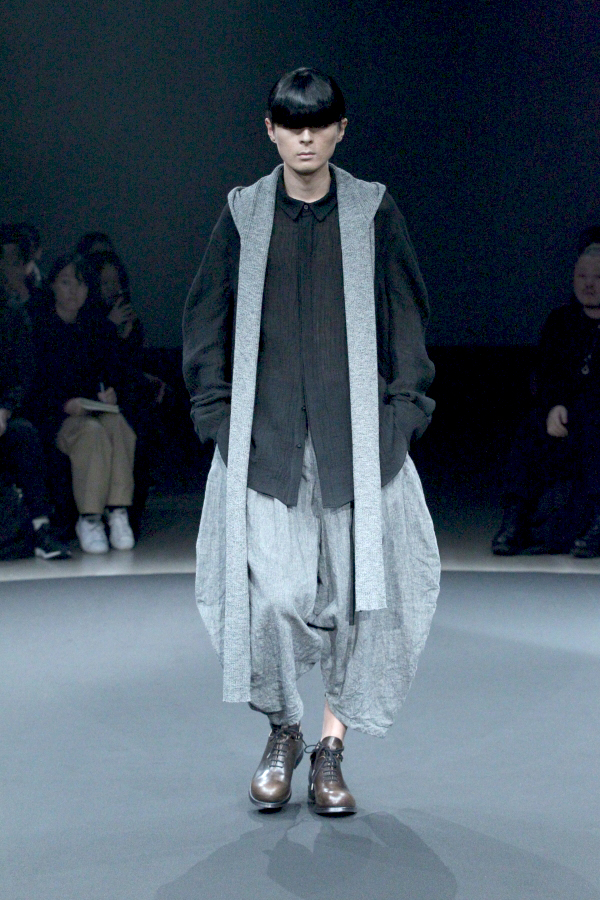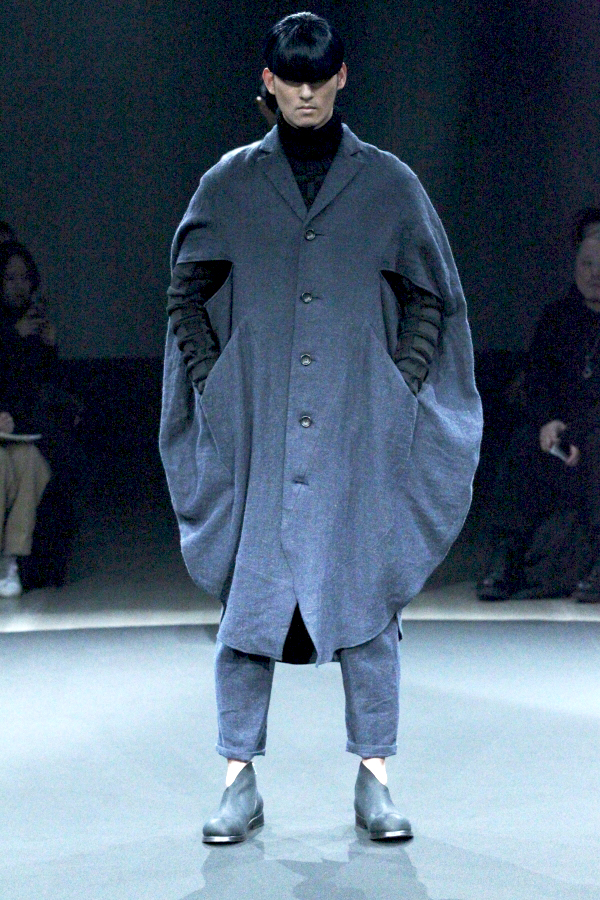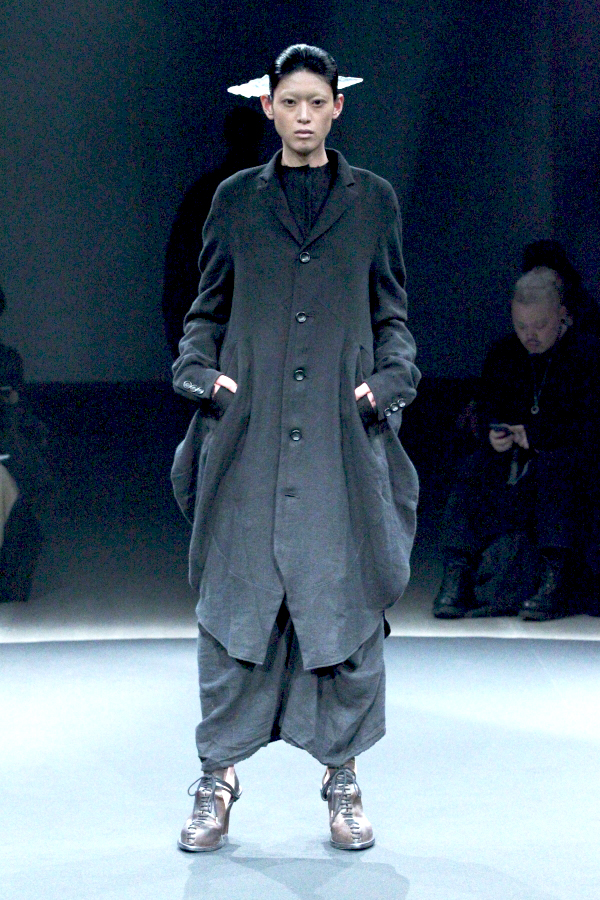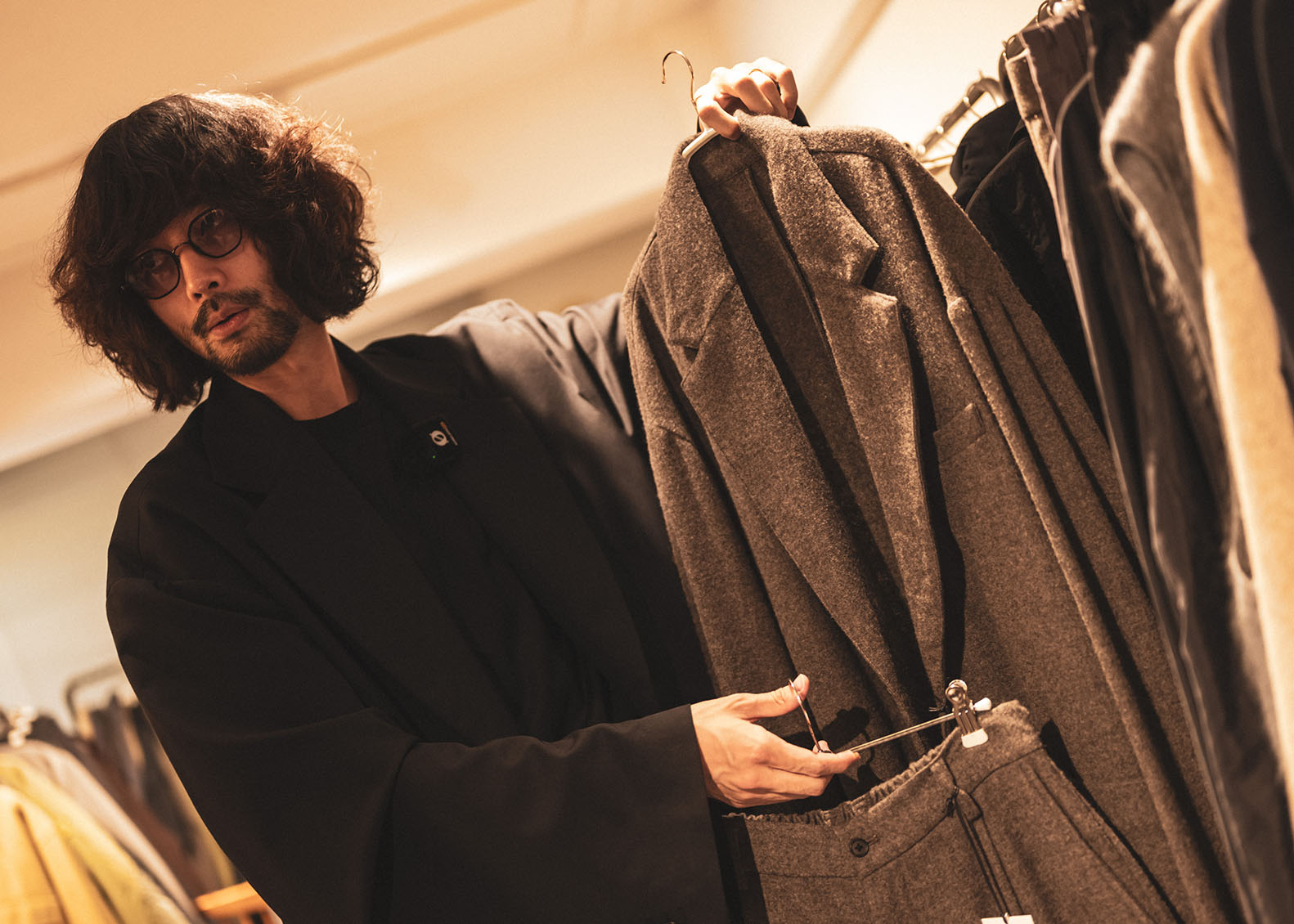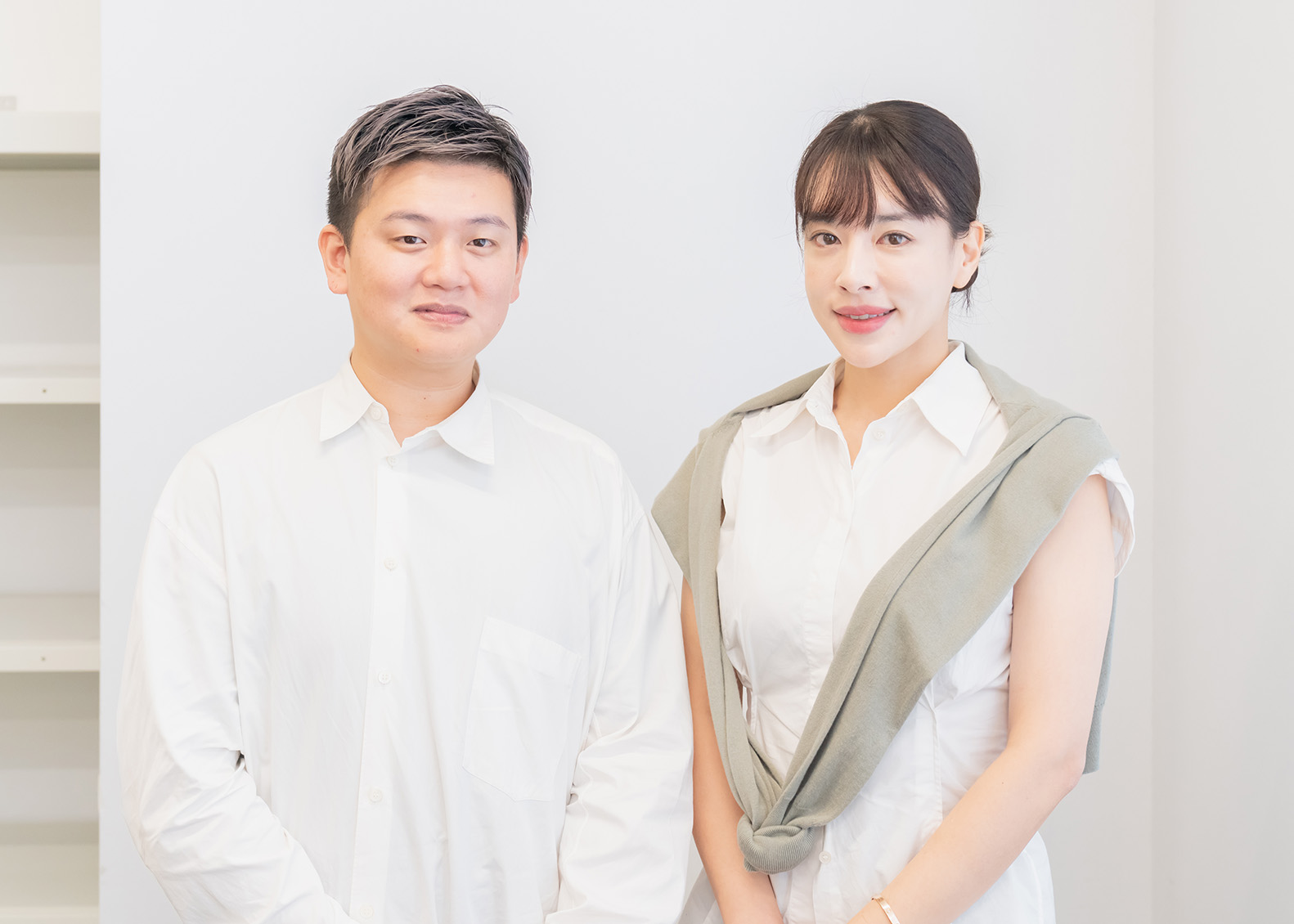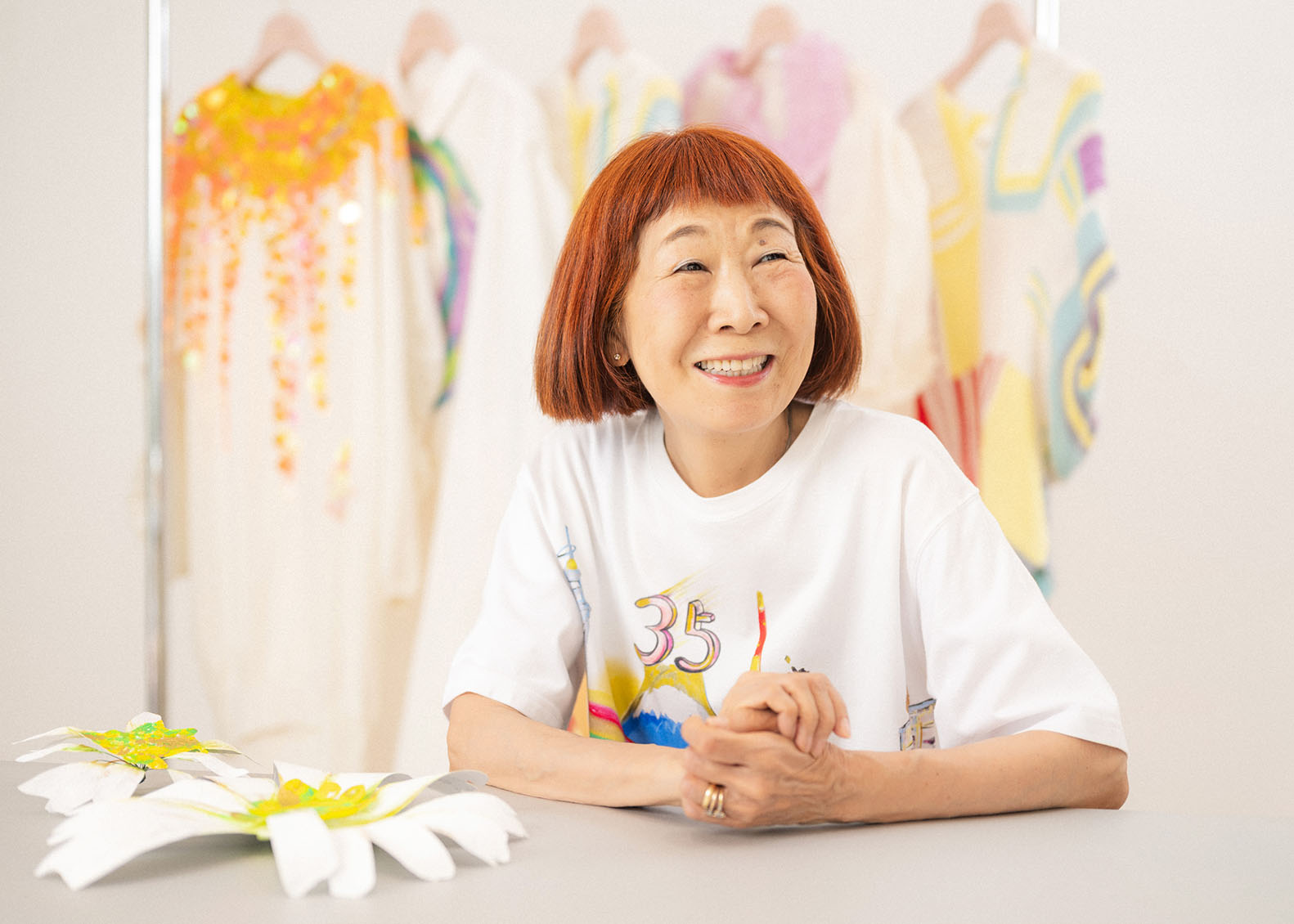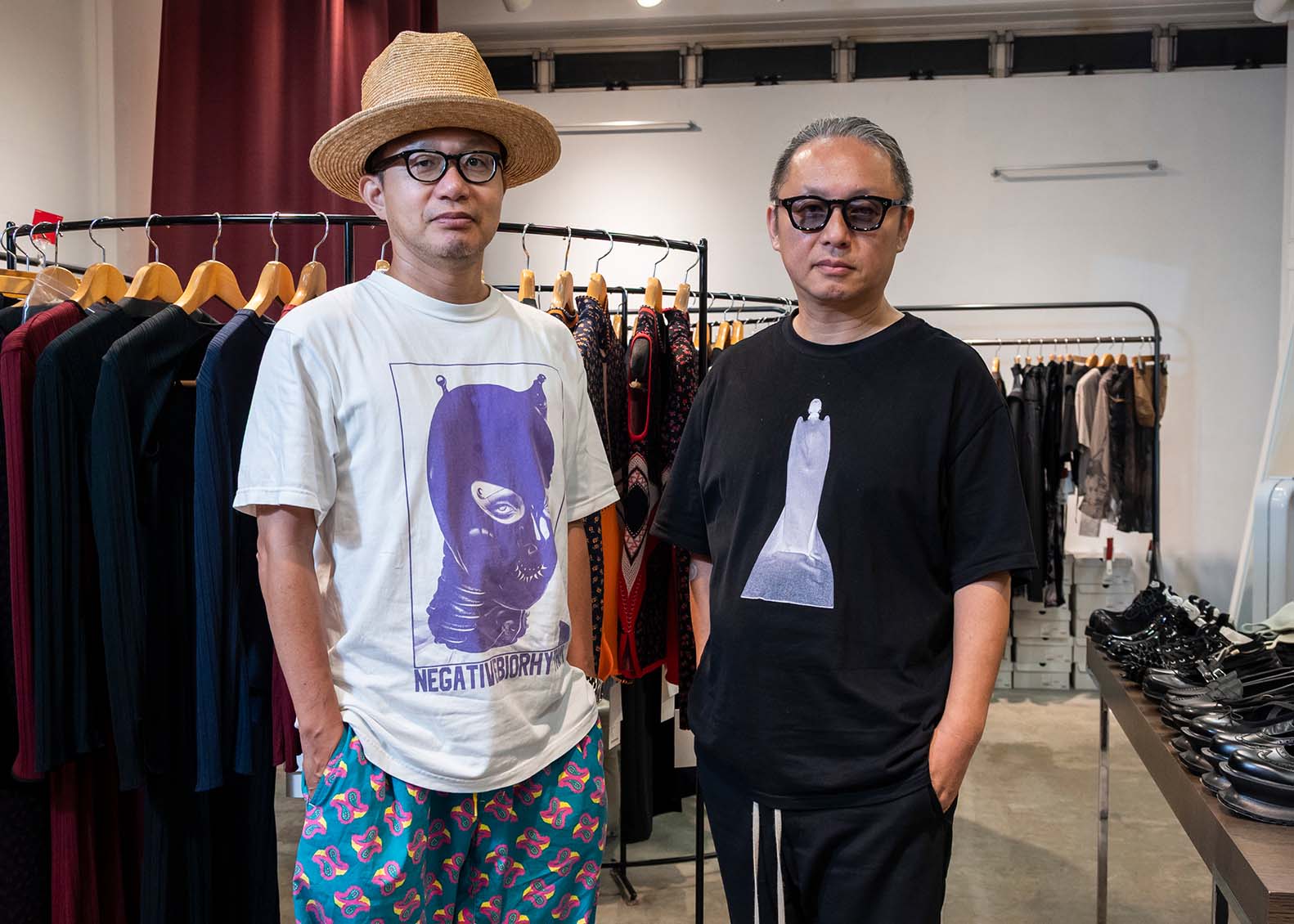Hitoshi Korogi / Keiko (ROGGYKEI)
Having extensive experience working in various shops, from select shops to vintage clothing shops, the duo, Mr. Hitoshi Korogi and his wife Keiko, together started up ROGGYKEI in 2006. Offering a wide variety of borderless and unisex items that do not limit the wearer’s nationality, ethnic background, gender, etc. Their collections which carries a strong message, is receiving high praise in both Japan and overseas. We spoke to the couple whom, from their atelier-cum-gallery shop base in Osaka, energetically tackle making overseas announcements, and made their first installation announcement during Amazon Fashion Week TOKYO, as a 2017 award winner of the TOKYO FASHION AWARD, earlier this year.
Please tell us the details behind how ROGGYKEI came to be.
Mrs. Keiko Korogi (Keiko, hereinafter):Originally, both of us used to work as shop staff. We worked at shops of all genres, from select shops to vintage clothing shops, and at first, we had been talking about opening our own shop, but as we thought about what kind of brands to carry, we started to think why not make clothes ourselves. From there, we went to a vocational school to study pattern making.
Mr. Hitoshi Korogi (Hitoshi, hereinafter):We both studied pattern making, but the first things we started to make were bags and accessories. This was in 2006. Later, we announced our clothes collection for the first time in 2010. Because it took a while before we started offering clothes, we were known more as a bag and accessory brand.
We’ve heard you started and have been continuing overseas exhibitions from early on.
Hitoshi:The first time was in 2012. We were invited by a client in Osaka, and decided to participate in an exhibition in Paris. We didn’t receive any orders there, but later, took our collection to a local shop we were introduced to, and received an order right there on the spot. They became our first overseas customer. Some time had passed before the next exhibition, but in recent years, we’ve been holding exhibitions in Paris ongoingly.
Keiko:It is of course expensive to go overseas, but we have been able to acquire precious experiences which simply cannot be bought. Our horizons have broadened from visiting various showrooms, but more importantly, we think we have gained a real feel for future creation, what kind of things we should make, what we need to do to realize that, etc.
Do you have a division of roles?
Keiko:We each have our fortes, but there is no clear division of roles. We don’t make items together. Rather, we each shoulder the whole production process, from designing, making patterns, to sample production, of the items we are each responsible for. If we were to work on an item together, we are bound to fight. But since we basically entrust each other per item, we don’t have such conflicts.
Hitoshi:If either of us creates something that makes the other think “really?”, then we are straight forward in voicing our opinion. But in such case, most of the time the person whom made it is not very fond of the item themselves, so we don’t end up in a fight even if we voice an honest opinion to each other (laugh).
Were your items mainly unisex from the start?
Hitoshi:Yes. Right after we started up our brand, we had an opportunity to participate in a joint exhibition at Hankyu MEN’S, and we made a clutch bag with male customers in mind, but a woman bought the bag. This experience is still clear in my memory, and we learned that even if we create items with a certain target in mind, it doesn’t mean that the assumed target will buy it. Since then, we’ve made it a point not to narrow down our target, not just in gender, and have taken the stand point of delivering our clothes to all customers whom like our creations. There has always been a sense of not only gender-less, but also boarder-less, genre-less at the base of our creation, so when we first started selling accessories, we hitched a concept of “Clothes as accessories, Accessories as clothes”, because we wanted people to wear our accessories as they would clothes.
The theme of the installation you presented at Tokyo earlier this year as a TOKYO FASHION AWARD 2017 award winner was “coexistence”. This also seems to coincide with what you just told us.
Keiko:I think so. Our idea of an ideal society is one in which people of different races, gender, beliefs, etc., can respect each other’s “differences”, and live in peace without conflict. Of course, this is easier said than done, but we would like to convey and express such feelings and thoughts as a message to our customers through our clothes. When deciding on a seasonal theme, we list keywords of things felt in daily life and social conditions, and from there, we usually extract aspects we want to convey the most.
Hitoshi:When applying those into clothes, we are especially particular about choosing materials and pattern making. Choosing material without compromise, while considering its compatibility with the design, and carefully make the pattern. By being particular about such pre-production processes, we believe that the end product inevitably ends up being beautiful.
Keiko:In addition to materials, we are particular about our items being ‘made in Japan’ through the whole clothes making process. Furthermore, recently we are also putting much effort into working towards conserving the environment. We’ve increased our use of natural materials, try to design for as little waste as possible, and are making clothes with scraps, etc. If we become too involved with this we end up wondering away from fashion, so balance is important, but recently, whenever we hold a scrap-recycle exhibition at our shop, we receive very positive reactions from our customers. We were originally shop staff ourselves, so we think it is also our strength that we can convey such messages directly at our shop.
Interview by Yuki Harada / Translation by Aiko Osaki
Photography by Yohey Goto
Started sales of bags and accessories in 2006, and began selling clothes from 2010. In 2014, relocated and opened a concept shop-cum-atelier at Nakanoshima, Osaka. In 2015, presented their first individual runway show at “Osaka City Central Public Hall”, a historical building in Osaka designated as a national cultural asset. In 2016, awarded the TOKYO FASHION AWARD.
[ Website ] http://roggykei.com/
[ Instagram ] https://www.instagram.com/roggykei/
[ Facebook ] https://www.facebook.com/ROGGYKEI/

